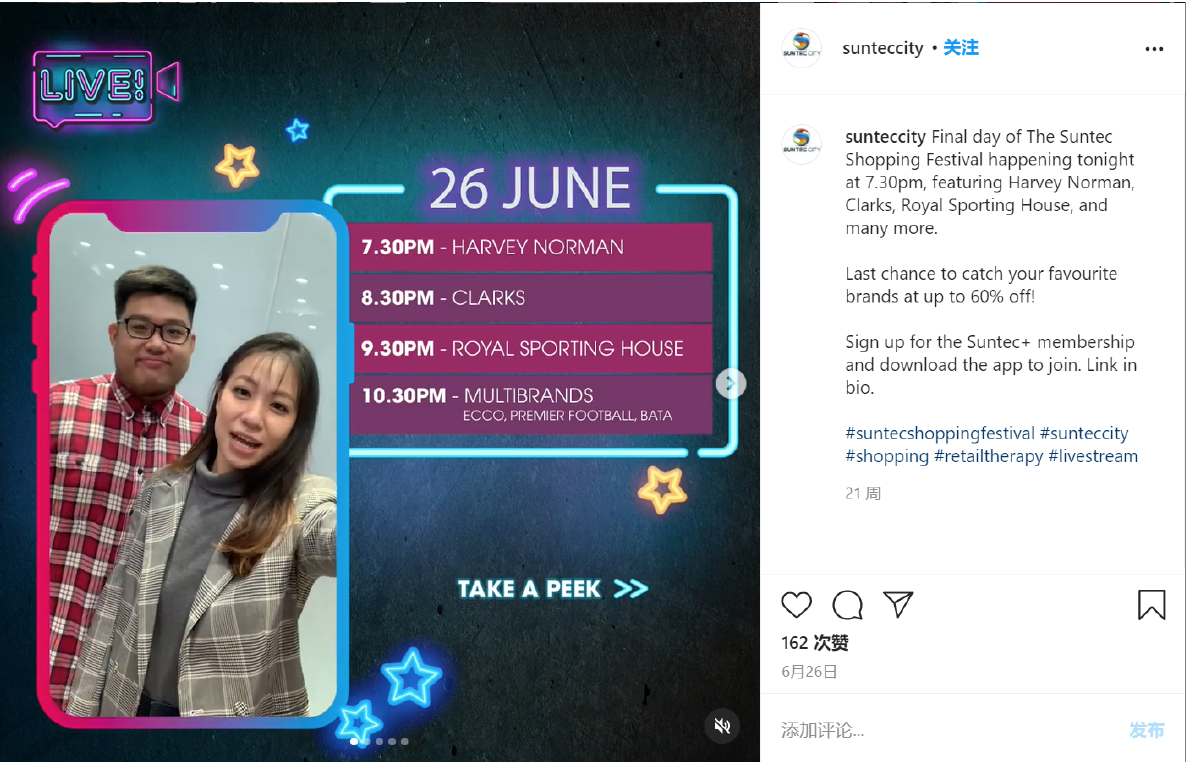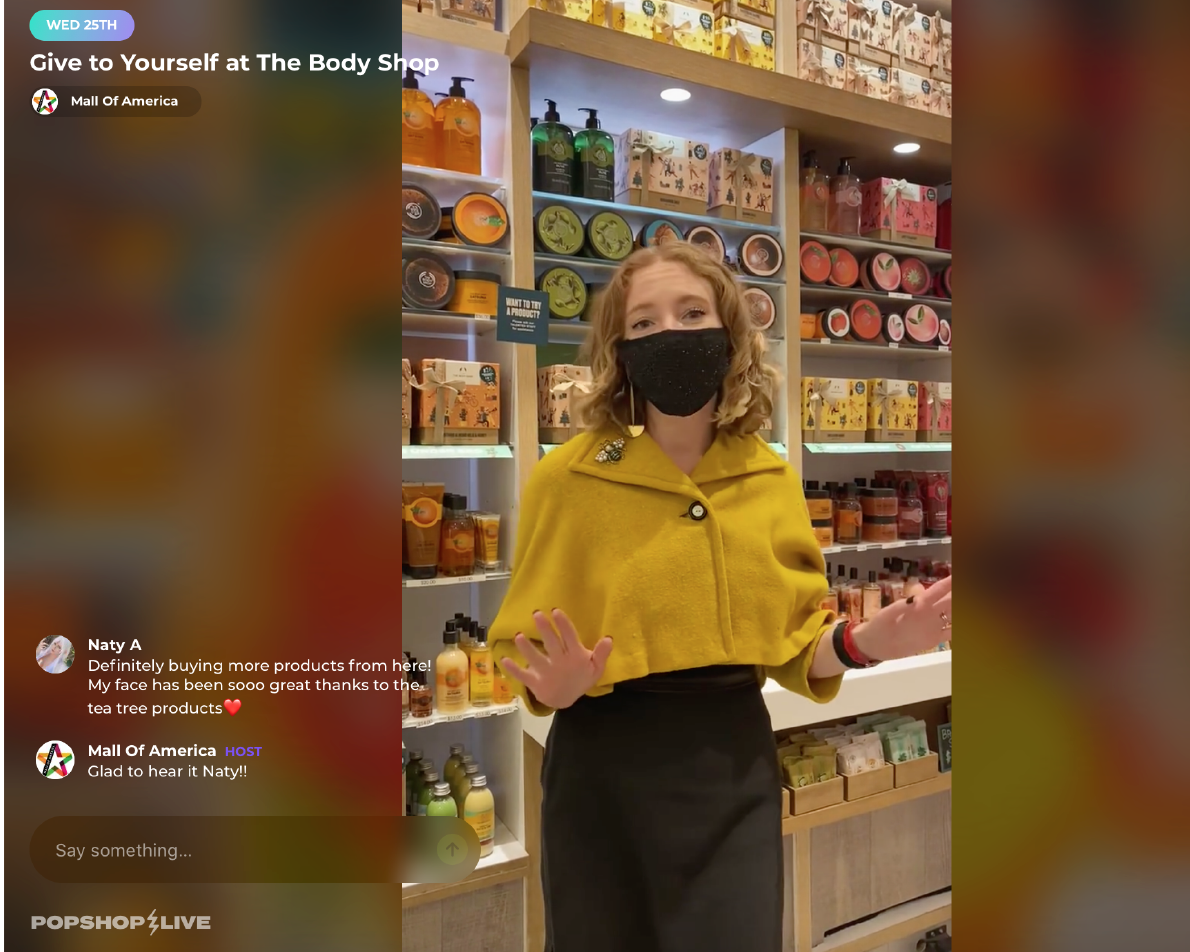
albert Chan
What’s the Story?
In this report, we discuss how shopping malls in China, Singapore and the US are using livestreaming to engage with shoppers and encourage them to visit malls. Hosting in-mall livestreaming events could malls to boost online sales or help drive physical traffic among shoppers that are keen to see products being discussed or showcased in person.
Why It Matters
The pandemic has exacerbated declines in mall traffic. Retailers globally should look to the explosive growth of livestream shopping in China—a market that is estimated to reach $305 billion across major platforms in 2021, according to KPMG and research firm AliResearch—to identify ways to revitalize mall ecosystems. Livestream shopping is just beginning to take off in the US, and we estimate that the US livestreaming e-commerce market could reach approximately $25 billion by 2023.
Livestreaming from Malls: In Detail
Your Mark Uses Livestreaming To Connect with Shoppers
Chinese mall owner Your Mark, which operates around 40 shopping centers in Hunan province, turned to livestreaming during the country’s coronavirus-led lockdown earlier in the year. From February 10 to 14, the Your Mark hosted 1,064 livestreaming sessions via Your Mark Go, its WeChat mini program—with an average of over 200 livestream sessions per day.
Through livestreaming, Your Mark is focusing on creating a frictionless shopping experience for consumers. When viewers see a product that interests them, they can use the embedded link in the video to easily click through and make an online purchase. If the item is eligible for a discount, this will be automatically applied at checkout to minimize input from the purchaser.
[caption id="attachment_120817" align="aligncenter" width="550"] Key opinion leaders host a product demo during a Your Mark livestream session
Key opinion leaders host a product demo during a Your Mark livestream sessionSource: Your Mark’s Weibo account[/caption]
Suntec City Launches First Livestreaming Shopping Festival in Singapore
In June, shopping mall Suntec City launched Singapore’s first livestreaming shopping festival, drawing learnings from the growing popularity of the livestreaming shopping trend in China.
Suntec Shopfest was hosted as a four-day event from June 23 to 26. The shopping festival featured interactive sessions with participating Suntec City stores, spanning more than 40 brands such as Aldo, Clarks, Fossil, Harvey Norman, Royal Sporting House, ToTT and W Optics.
[caption id="attachment_120818" align="aligncenter" width="550"] Suntec City’s livestreaming schedule on June 26, 2020
Suntec City’s livestreaming schedule on June 26, 2020Source: Suntec City’s Facebook account[/caption]
The livestream sessions offered discounts of up to 60%, as well as more than $20,000 worth of prizes and exclusive products for viewers. The Suntec City mall focuses on creating consumer engagement opportunities through its app: Shoppers can comment on and like the products through the livestream on the Suntec+ app. The app also allows shoppers to find out more details about a product and provides clickable links for direct purchases. Consumers can pick up products bought during livestream sessions at stores in the mall or opt for home delivery.
Mall of America Leverages Livestreaming To Improve Mall Engagement
In September, Mall of America teamed up with livestreaming shopping app Popshop Live to bring its stores to consumers via digital technology. This exemplifies how malls can serve as platforms for their tenants through livestreaming, aggregating products from their diverse tenant mixes to feature in livestreaming sessions.
Mall of America uses the Popshop Live app to replicate physical shopping experiences, enabling shoppers to interact with the livestreaming host, by asking questions and navigating the store through them. After consumers shop, they can choose home delivery or take advantage of free curbside-pickup services at Mall of America.
[caption id="attachment_120819" align="aligncenter" width="550"] A key opinion leader hosts a livestream session from Mall of America
A key opinion leader hosts a livestream session from Mall of AmericaSource: Popshop Live[/caption]
Mall of America also offers a function for consumers to give feedback with ideas and requests for future livestreaming sessions, as part of its efforts to provide opportunities for more dynamic engagement with shoppers.
What We Think
Livestreaming represents a dynamic means for malls to improve customer engagement and ultimately drive sales. Malls can make use of any vacant spaces and reassign employees to organize livestreaming events while physical traffic is low. They can leverage their expertise in customer service to offer enhanced livestreaming interactions for consumers.
Malls can become platforms for their tenants through livestreaming. Diverse tenant mixes enable malls to offer a wide range of products as well as various types of livestream sessions—for instance, malls with tenants such as cinemas can leverage these entertainment venues to improve livestreaming experiences. In this respect, malls likely have an advantage compared to a single retailer that would have a more limited offering.
Malls can also host themed livestream sessions to give consumers “behind the scenes” insights into mall ecosystems, including real estate planning and design. This insider information may help to sustain consumer interest in mall environments.
In addition to providing retailers with an online channel through which they can boost sales, hosting in-mall livestreaming events could help mall operators to drive physical traffic when shoppers become more comfortable visiting shopping centers in the wake of the pandemic. This trend could also pave the way for more in-person events at malls in the future, offering further engagement opportunities in physical retail.